Products & Technologies
Back to Menu
Products & Technologies
Services
Resources
TABLE OF CONTENTS
A Letter from Ali Salehpour - Many Roads to Accelerate Time to Market
Boost Factory Productivity Faster With Applied SmartFactory® Dispatching And Reporting
Breaking The Cycle—MtM Technologies Push Forward
In The Age of AI, Maydan Technology Center Evolves
E-Beam Review and CD Measurement Revolutionizes Display Yield Management
Boost Factory Productivity Faster with Applied SmartFactory® Dispatching and Reporting
BY Madhav Kidambi
In semiconductor front-end fabs as well as back-end assembly, test and packaging (ATP) facilities, efficient and flexible factory-floor production dispatching is vital to high productivity. Dispatching is the process of determining the next job that should be processed—ideally in real time—then assigning it to the right tool or station and ensuring it gets there at the right time and with minimum queue time.
Although building an effective dispatching system is vitally important, it’s equally important do so quickly to achieve critical factory productivity and time-to-market goals.
A key way to accomplish these goals is to automate the dispatching process. Applied SmartFactory Dispatching & Reporting is an automated decision system that executes advanced rule-based, real-time dispatching and reporting strategies in both front-end and ATP factories.[1] It is deployed with EngineeredWorks™, Applied’s prebuilt, out-of-the-box automation logic that executes on Applied’s proven APF platform and enables faster deployment times for dispatching systems (figure 1).

Figure 1: The illustration shows the range of capabilities available out-of-the-box with Applied Materials EngineeredWorks for dispatch.
The results of two recent customer projects demonstrate how the use of these preconfigured solutions can greatly reduce the time needed to implement highly efficient real-time dispatching.
CASE #1: DISPATCHING IN A 150mm FAB
In 2015, one Applied Materials customer with multiple factories in Europe and Asia began to work with Applied to increase uptime utilization of key bottleneck tools at a European site.
Initially, the customer decided to use a custom dispatching protocol. They purchased an APF license from Applied and then took advantage of Applied’s services on a time-and-materials basis to implement the global dispatching rule, which focused on line balancing to feed bottleneck tools better.
This initial implementation took one year. The development effort itself took about six months, and additional time was required to roll out dispatching rules in the fab because this was a big change for manufacturing personnel. Efforts were made to improve dispatching compliance and to gather input to improve the functionality of the dispatching rules.
However, the following year the company realized additional dispatching rules were needed to manage queue-time control and batching, while enhancements to the existing dispatching rules were also required. But with few resources dedicated to this project, and lacking the additional skilled resources needed for the deployment, the company looked for alternatives.
At this point Applied proposed the implementation of EngineeredWorks for dispatch and the customer agreed. The project scope included developing an Extract, Transform and Map (ETM) layer to map data from the factory’s MES system to a common data model, along with developing additional dispatching rules and reports as shown in figure 2.
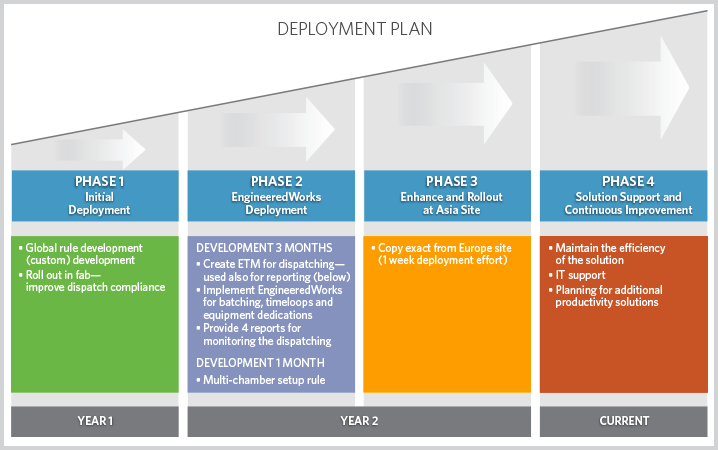
Figure 2. The deployment plan for an out-of-the-box EngineeredWorks for dispatch implementation for one customer’s 150mm front-end fab.
Using this approach, Applied and the customer were able to tailor EngineeredWorks for dispatch to meet site requirements in just three months.
Following a successful implementation in Europe, the customer also decided to use EngineeredWorks for dispatch at its site in Asia. The same solution was deployed there in just one week, marking a huge reduction in deployment time from the nearly two years it had taken for the initial full-custom implementation.
In addition to the reduction in deployment time for dispatching, this customer also benefited from improvements in uptime utilization for the fab overall. The impact of EngineeredWorks for dispatch is captured in figure 3.
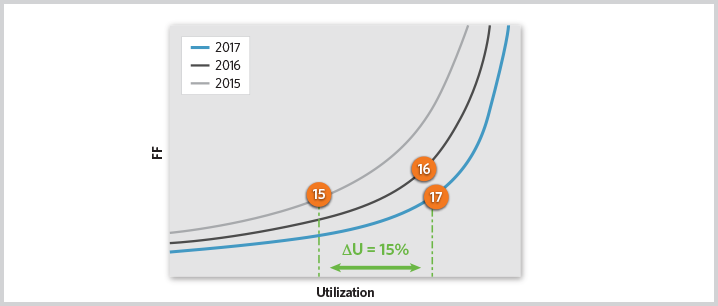
Figure 3. The figure shows the improvement in equipment uptime utilization that resulted from implementing EngineeredWorks for dispatch in a 150mm front-end fab.
These issues were relevant at one ATP customer with multiple sites in the US and Asia. Management selected Applied Materials EngineeredWorks for dispatch for deployment at all their sites as a first step towards full automation. The project was also expected to improve factory utilization by at least 8%—which in a factory running high-volume production can amount to annual savings of ~$20M.
The first step in implementing these capabilities was to automate the dispatching decisions. EngineeredWorks for dispatch not only does this, it also provides prebuilt interfaces to MES, scheduling, and material control system (MCS) software for controlling the AGV devices, as shown in figures 4 and 5.
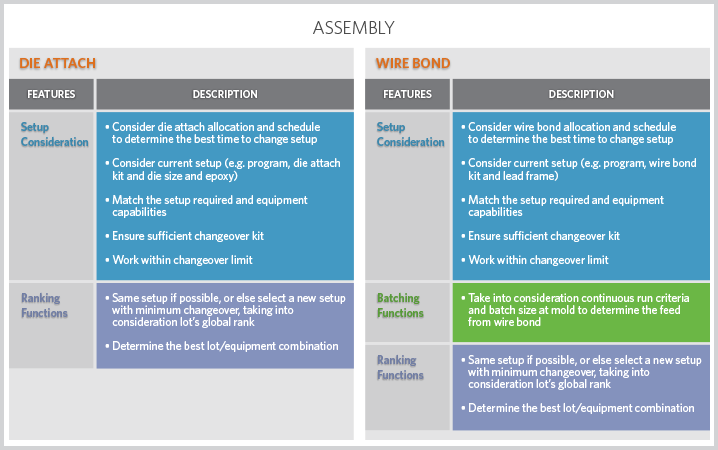
Figure 4. The tables illustrate the functionality of EngineeredWorks for dispatch in the assembly area (die attach and wire bond) of ATP factories.

Figure 5. These tables show the capabilities of EngineeredWorks for dispatch in the tester area (tester and burn-in) of ATP factories.
The initial project was to deploy EngineeredWorks for dispatch at four sites within eight months. The project plan for this implementation is shown in figure 6.
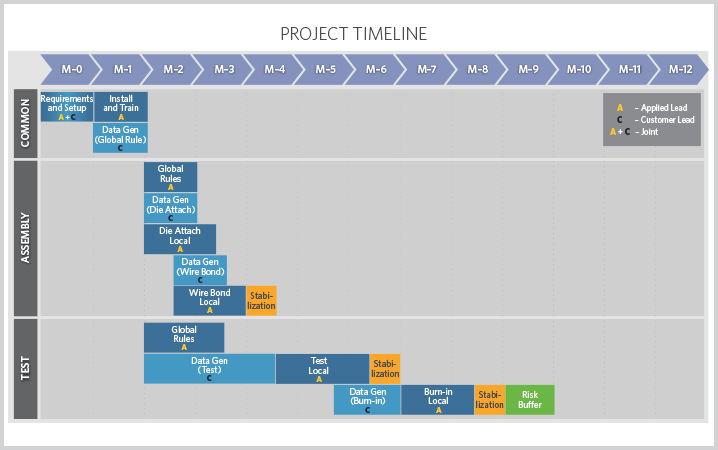
Figure 6. As a precursor to fully automating its four ATP plants in the US and Asia, one customer needed to implement EngineeredWorks for dispatch at all four factories. The project timeline above shows how that was accomplished within eight months.
Applied Materials and the customer developed a collaborative project plan in which Applied took the lead in developing and customizing EngineeredWorks based on the customer’s requirements, while the customer was responsible for mapping their data into the common data model. Applied and the customer had joint responsibility for the rollout, which enabled them to quickly address any issues that arose.
All development work and the initial deployment were done at one lead site. After a successful implementation there, EngineeredWorks for dispatch was rolled out to three other sites in parallel. Although this was challenging because the four sites were at different geographical locations, Applied was able to provide local deployment resources at each site in addition to expert resources at the lead site for development and integration.
The initial deployment was supposed to be completed in a couple of months, but it took longer because of data availability and accuracy issues. Nonetheless, with close collaboration between both teams the issues were resolved and EngineeredWorks for dispatch was successfully deployed as originally planned at four sites within eight months.
In addition, the initial results post-deployment showed that the sites achieved more than 8% improvement in tool utilization. The customer is now looking at implementing AGV transport solutions.
Looking Ahead
Going forward, Applied Materials will continue to enhance the out-of-the-box capabilities of EngineeredWorks for dispatch to provide a solid foundation for implementing more comprehensive automation and scheduling solutions that leverage Applied’s proven APF technology (figure 7). In addition, pilot projects are under way to incorporate data mining and machine-learning techniques into future fab productivity solutions.
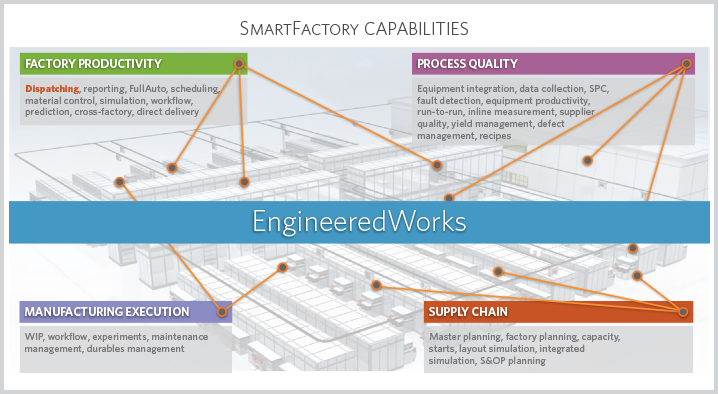
Figure 7. EngineeredWorks for dispatch is just one of a series of advanced capabilities that Applied Materials has in development to deliver greater productivity faster to front-end fabs and ATP facilities.
For additional information, contact madhav_kidambi@amat.com
To learn about the Applied SmartFactory suite of manufacturing products and solutions supporting next-generation manufacturing, visit our website, blogs and videos at: https://appliedsmartfactory.com/.
[1] Madhav Kidambi, “Achieve Higher Productivity Faster,” Nanochip Fab Solutions, December 2017
[2] Didier Chavet, Shekar Krishnaswamy, “Factory Automation is Key to Sustainable Manufacturing at Western Digital at Shanghai Assembly and Test Facility,” Nanochip Fab Solutions, December 2016
[3] Didier Chavet, Shekar Krishnaswamy, “Mobile Applications to Enhance Manufacturing Productivity in Advanced Packaging,” IWLPC (Wafer-Level Packaging) 2014 conference proceedings
